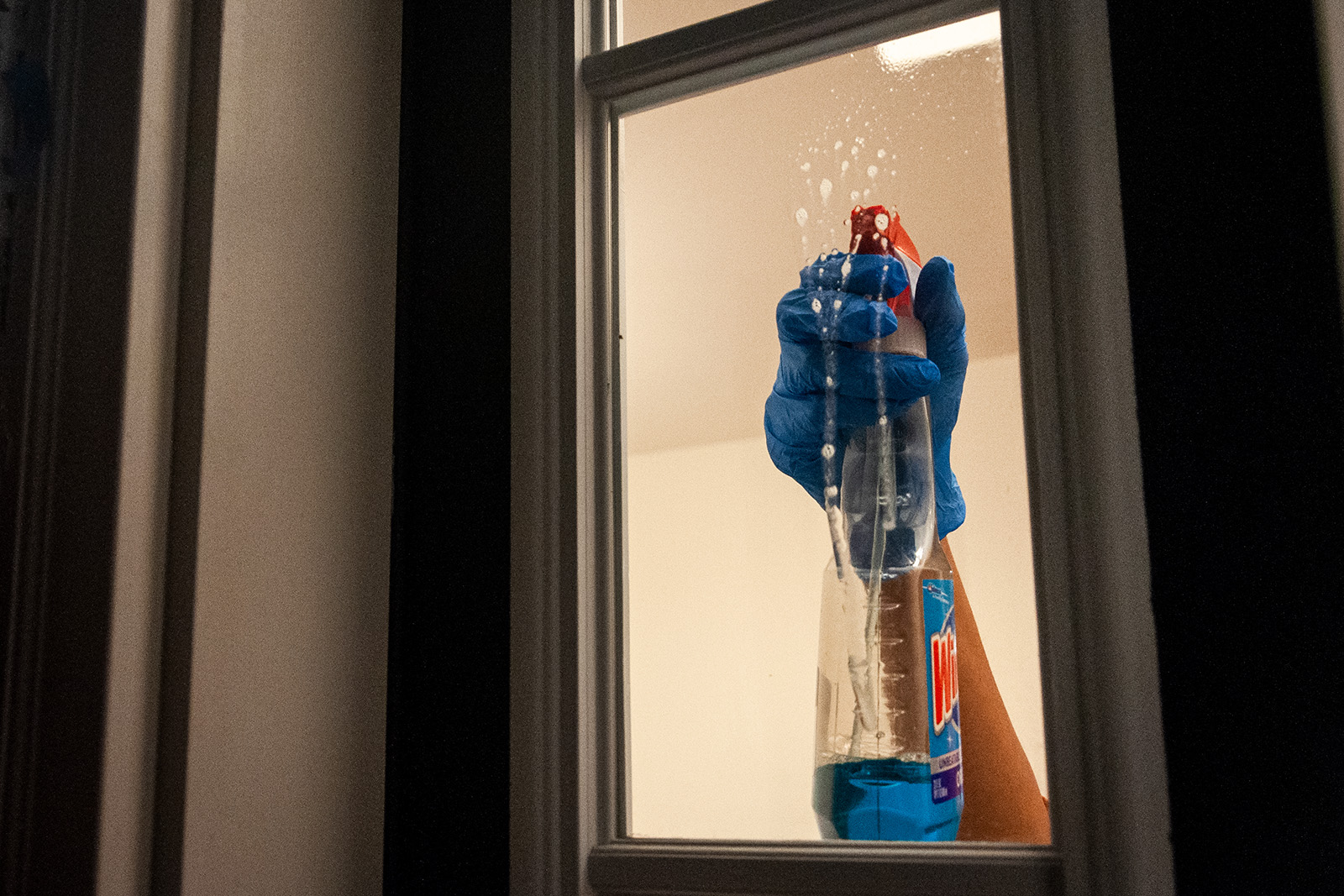Campus Queries: For how long does the novel coronavirus remain infectious on different surfaces?

A recent study involving UCLA researchers found that the novel coronavirus remains infectious on certain surfaces for several hours to days, depending on the material. For example, severe acute respiratory syndrome coronavirus 2, the virus that causes the disease, can last for 72 hours on plastic and stainless steel but only four hours on copper. (Daily Bruin file photo)
By April Peng
April 28, 2020 9:04 p.m.
Campus Queries is a series in which Daily Bruin readers and staff present science-related questions for UCLA professors and experts to answer.
Q: How long does the novel coronavirus last on some surfaces?
A: A team of researchers at UCLA, the National Institute of Allergy and Infectious Diseases, Princeton University and the Centers for Disease Control and Prevention discovered that COVID-19 can remain infectious on plastic, stainless steel, copper and cardboard from several hours to days, depending on the surface.
The study, published March 17 in the New England Journal of Medicine, compared the environmental stability of severe acute respiratory syndrome coronavirus 2, or SARS-CoV-2, which is the strain causing the current coronavirus outbreak, and SARS-CoV-1, the strain that caused the 2003 SARS outbreak. Environmental stability refers to how long the virus remains infectious in the environment.
The results showed that the environmental stability of SARS-CoV-2 was similar to that of SARS-CoV-1 under the experimental conditions, with the virus remaining viable in aerosols for three hours and on plastics and stainless steel for up to 72 hours.
SARS-CoV-2 was able to live for up to four hours on copper and 24 hours on cardboard, differing from SARS-CoV-1 which was found to be viable for 8 hours on both materials.
The objective of the study was to compare SARS-CoV-2 to SARS-CoV-1 to understand if the difference in epidemiological trend, the pattern of virus distribution, between the two strains is due to a difference in environmental stability, said Amandine Gamble, a postdoctoral researcher at UCLA who co-authored the study.
“If everything was equal for these two viruses, if symptoms are the same, stability in the environment is the same and replication rate in people is the same and so on, then you would expect the two viruses to follow exactly the same epidemiological trend,” Gamble said.
The results suggest that the rapid spread of the current outbreak is not due to greater environmental stability, said Dylan Morris, a co-author of the study and graduate student at Princeton.
The virus’ potential for presymptomatic and asymptomatic transmission, meaning the infected individual can be contagious without showing any symptoms, is believed to be the major factor for the rapid outbreak, Gamble said.
This factor makes a big difference for intervention strategies, as SARS-CoV-1 was mostly contained by putting sick people in quarantine, Gamble said. The same method is not viable for SARS-CoV-2 as asymptomatic people can still be infectious, she said.
“That’s why we are now practicing this social distancing, … where we ask people, even if they’re not showing any symptoms, to try as much as possible to reduce contact with other people,” Gamble said. “Because potentially, they can be carrying the virus without knowing it.”
The data for cardboard suggests that there is a significant discrepancy between the half-lives of SARS-CoV-1 and SARS-CoV-2. However, as the cardboard results were the noisiest of the group, meaning there is greater room for error, the researchers concluded that the environmental stability of the two strains is similar.
The results showed that copper had the lowest stability among all the materials tested, which means SARS-CoV-2 doesn’t remain on a surface of it for very long. This may be because copper has been shown to have antimicrobial properties, Morris said.
“That was part of why we wanted to test copper,” Morris said. “Because copper has been known for some time to have virucidal properties, that is, viruses … tend to not stick around very well on copper.”
Respiratory viruses like the novel coronavirus are primarily spread by droplet nuclei, which are collections of viral secretions, said Timothy Brewer, a professor of epidemiology at the UCLA Fielding School of Public Health.
These particles are produced when people talk, cough or sneeze and tend to travel anywhere from about one to two meters and then impact on a surface, Brewer added.
“(If these particles) impact on a surface, they can survive there for a while,” Brewer said. “So it is important for individuals to wash their hands after touching surfaces or frequently cleaning surfaces where there may be a lot of potentially infectious individuals.”
A key takeaway from the study is the importance of wearing masks to avoid contaminating the environment, Morris said.
“If you put on a mask and wear it for a little while, you’ll notice that it gets a little bit gross and humid in there. … Some of that humidity is droplets that didn’t get out into the environment,” Morris said. “If those droplets had the virus, those are viruses that didn’t get out to the environment (and) land on the plastic where they could have stuck around for a half-life of about six, eight hours.”
The study also showed that the virus can linger in aerosolized form, droplets suspended in the air, for up to three hours after being ejected from the patient.
“Aerosolized particles are generated in pretty high numbers … by some of the medical procedures that you use to treat severe (COVID-19 cases), like ventilation,” Morris said. “That’s a big risk for any doctor or nurse or technician or other health care workers in that room, so you really need them to have proper protective equipment.”


